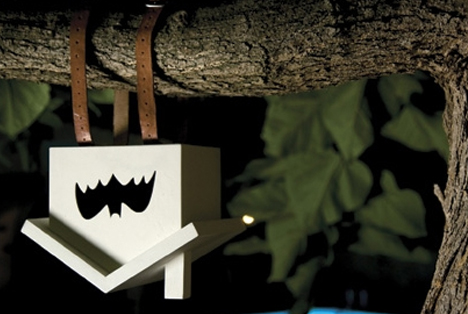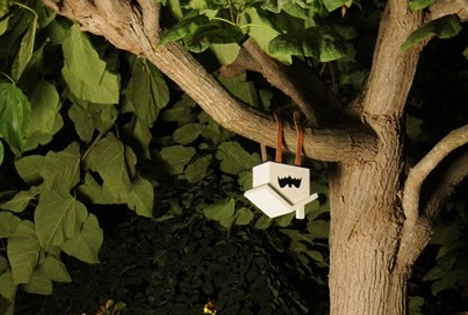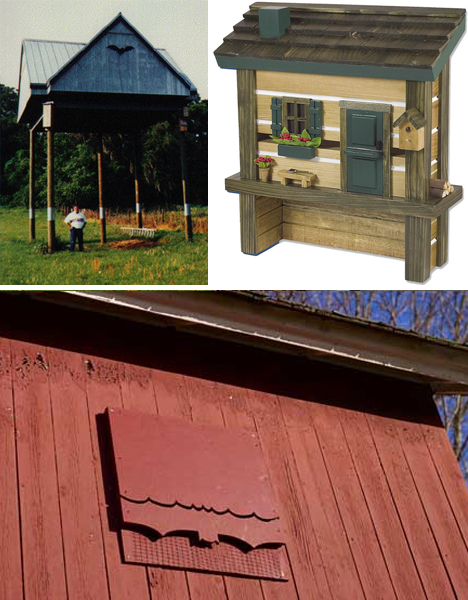
Whimsical, fun and clearly communicated, this white-painted ‘mini home’ designed by Estres Estudio (and hung from leather belt-like straps wrapped around a tree branch) is nothing if not cute and chuckle-worthy. The only problem: it truly is upside-down – no, not as in ‘it looks inverted’ but it is functionally reversed as well.

As it turns out, bats do indeed like to hang upside-down, but the only way they can do that is if the element they suspend themselves from is above them. In generally, they enter ‘houses’ from the bottom up – not the top down.

Not to overly criticize this particular idea, but it is an example of a larger question of design: how well do you know the subject matters relevant to your design? Architecture, interior and industrial design students sometimes jump to conclusions without researching the problems thoroughly.

A ‘designer’ bat house might sell very well on the open market, but there are plenty of build-it-yourself options worth learning from. Even if they do not represent the height of contemporary architectural aesthetics, they are worth looking at before striking out on your own
No comments:
Post a Comment